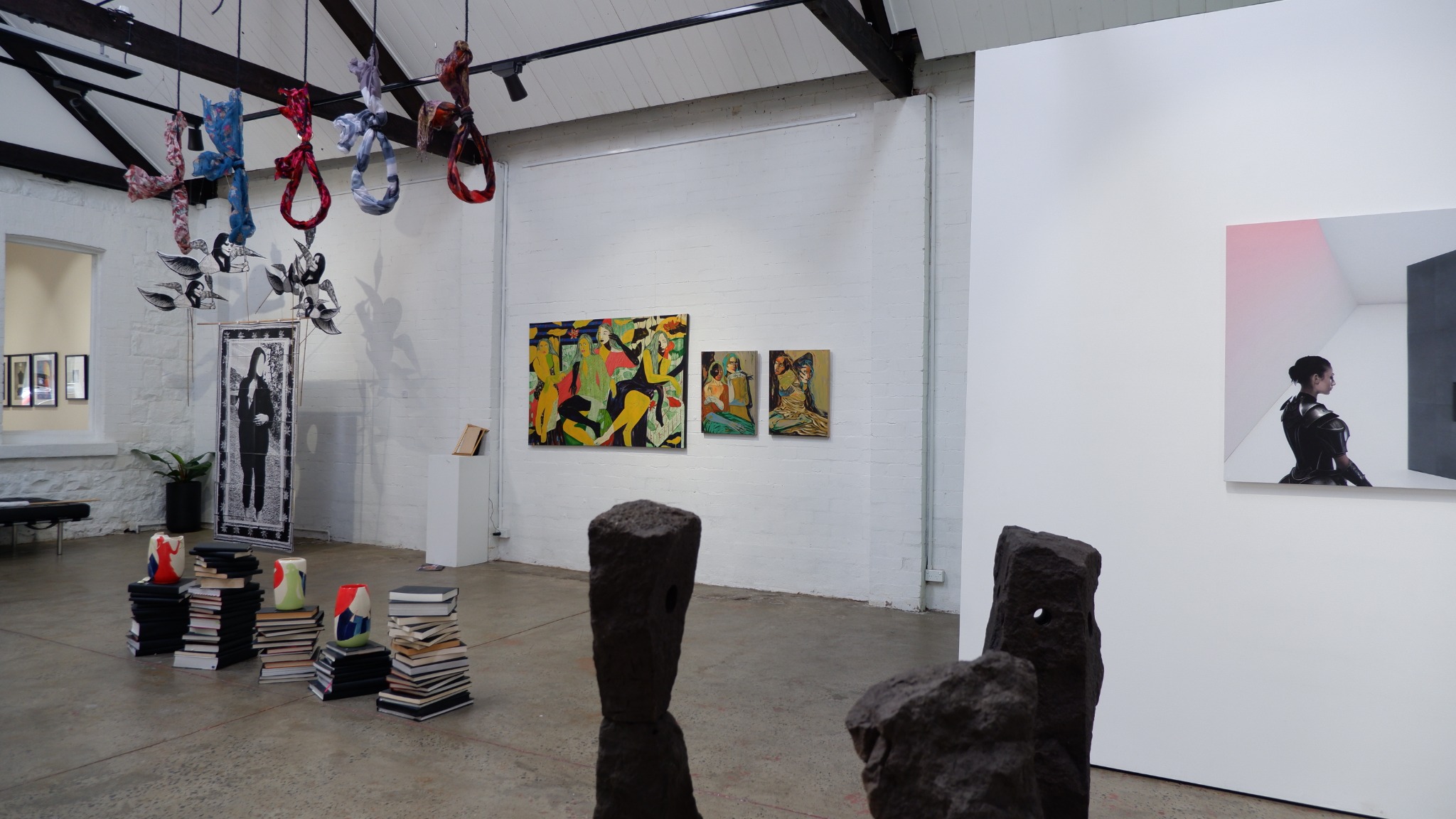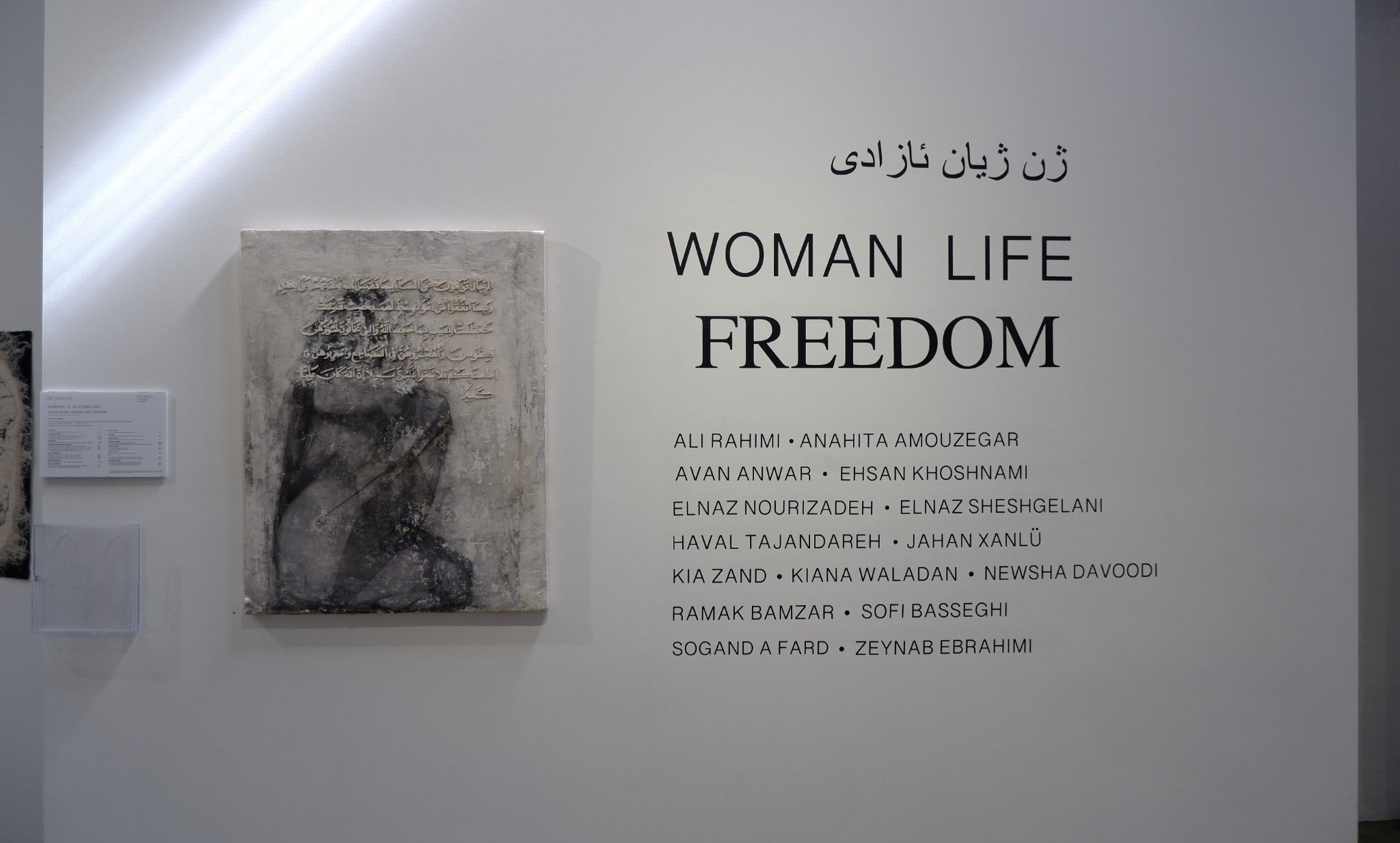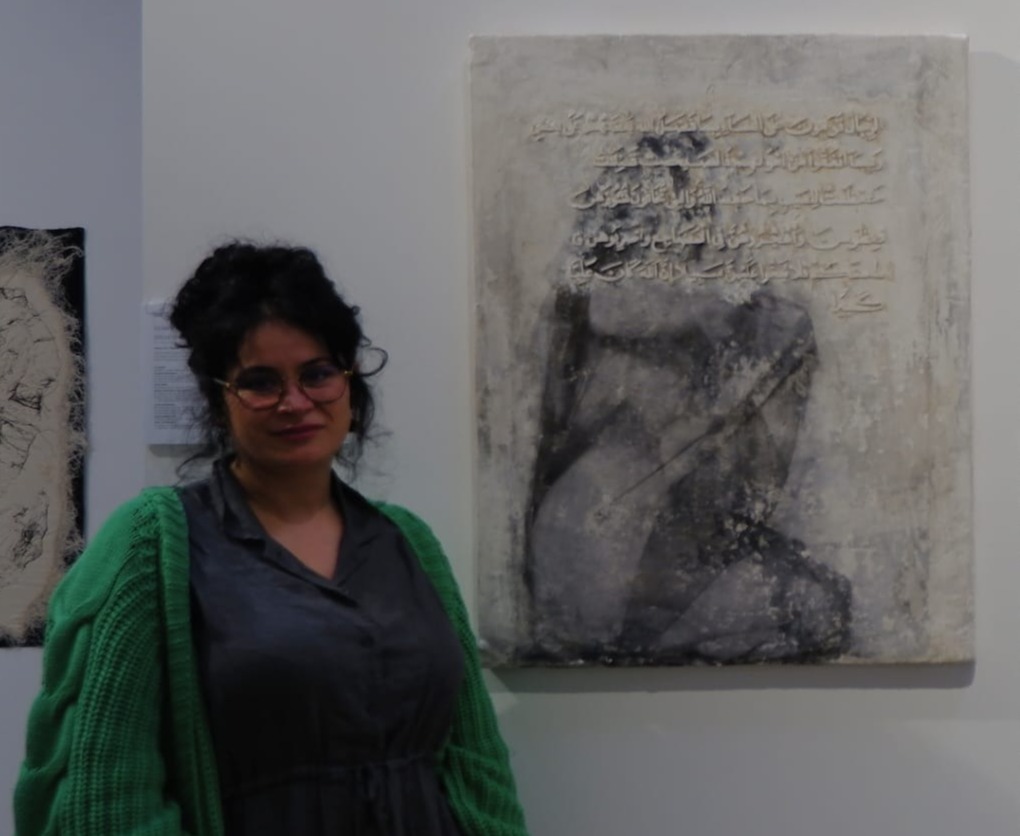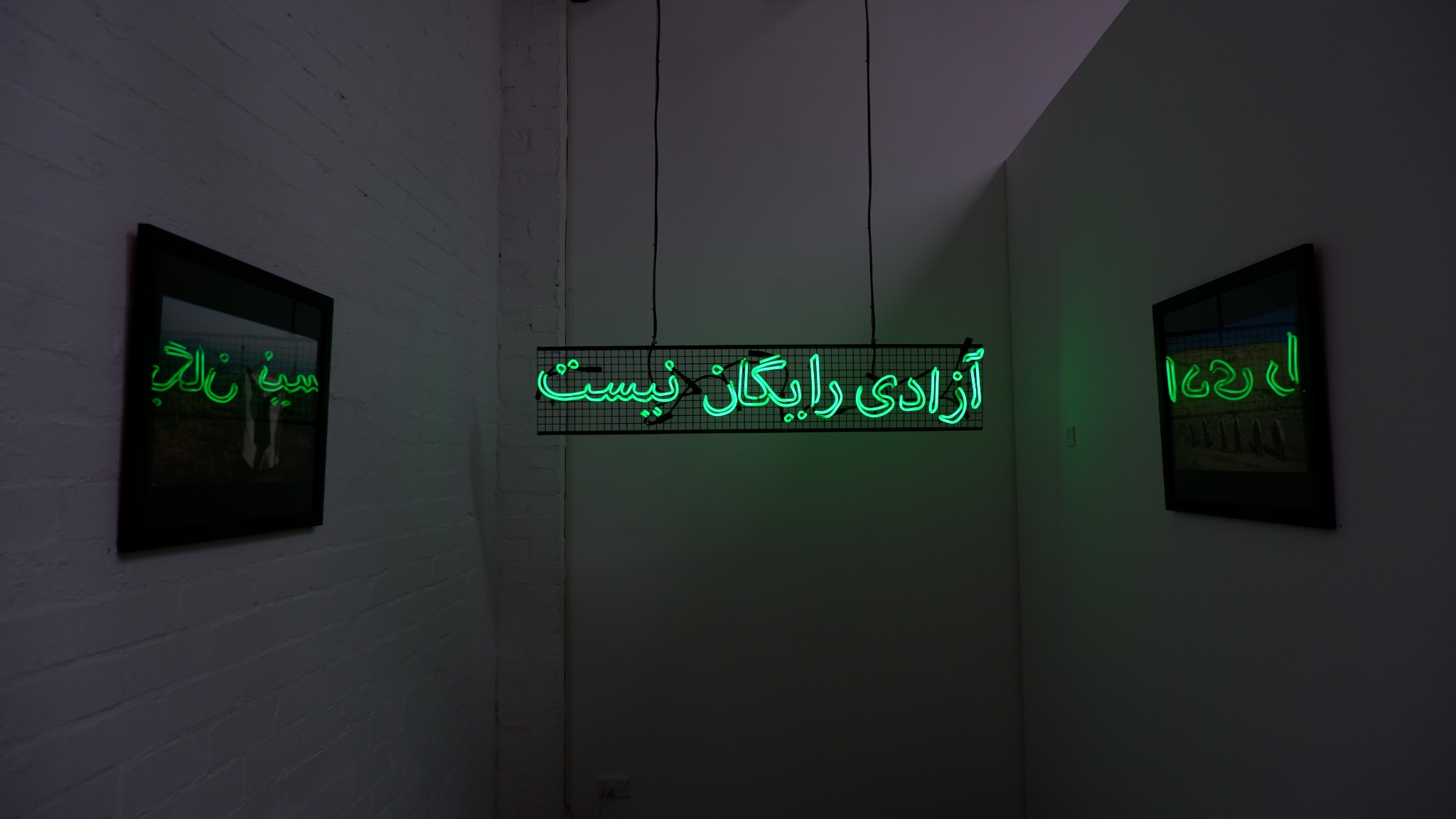Art is Their Weapon

Five nooses made from scarfs with pedestals from books would be the first thing seen as around 230 audiences walked into the room on the opening night. Surrounding that installation were a human-sized paper installation dedicated for Mahsa Amini, a broken frame with crinkled portrait of the supreme leader of Iran on the floor, a neon sign that says Freedom is not Free in Farsi, three observatory sculptures made out of bluestones, and paintings and photographs displayed on the walls. BLACKCAT Gallery, located on Fitzroy, dedicated a space for Iranian and Kurdish artists to display their arts in a group exhibition entitled WOMAN, LIFE, FREEDOM. Opened from 19 until 30 October, it is the first art exhibition in Melbourne dedicated to Mahsa Amini and the fights of Iranian and Kurdish people for freedom, following more than a dozen of protests that have been happening since the end of September.
“Around 30 artists have applied, but unfortunately there is not enough space,” said Avan Anwar, the curator of the exhibition, while pointing out the names of 15 artists involved written on one of the walls. Elnaz Nourizadeh, who just got back from Iran in the beginning of October, was one of the artists whose works were displayed in the exhibition. She created the installation in the centre of the space: five nooses made of scarfs with pedestals made of piles of books.

“I was just trying to bring it metaphorically how the scarf is just a symbol for taking all of our freedom,” Elnaz said. “But the whole idea is that in Islamic Republic, if you know more and if you study more, you are always in more danger,” she added, explaining the meaning behind the fact that the more books are piled, the closer they are to the nooses. Elnaz also said that this is the first time that she was being “so upfront”.
“That’s because I've been in Iran and I felt like this is a time that I don't want to be silent,” she explained.
Kia Zand, another Melbourne-based Iranian artist involved in the exhibition, on the other hand, took a more abstract approach with his work. Through three sculptures made of bluestones, each with a drilled hole, that he called Observatory, he invited the audience to gaze through the sculptures into “the current social political climate”.

Even though the director of BLACKCAT Gallery, Pimpisa Tinpalit, dedicated the space for free and initiated the exhibition by directly contacting Avan Anwar, the curator, the journey had not been easy for Avan and the artists. Avan said that the preparation was “frustrating” because the artists only have two weeks to prepare their arts and installations. On top of that, there are also some safety issues.
“I got a text, they asked for my artists’ names, or why I’m doing this [exhibition],” Avan said. Some artists involved in the exhibition were also anonymous or under a pseudo-name, because according to Avan, “they could be in danger”. However, none of those challenges stopped Avan from actualizing the exhibition.
“I’m working for humanity; this is my aim. Because the war has damaged a part of my body, I lost my hearing ability from the war,” she added.
Art has been established to have significant impacts on social movements and society (Milbrandt 2010), and the artists involved in this exhibition agree. Kia said that the exhibition has very powerful impacts alongside of the marches that has been happening in Melbourne.

“Art has always been there as a most powerful and the most significant peaceful way of talking about concerns and art softens the aggression. Art makes it more interesting. It brings creativity to the movement,” he said.
Ramak Bamzar, another artist involved in the exhibition has akin opinion, “Because I don't have any other power, and this is my weapon.”
REFERENCES
Milbrandt M (2010) ‘Understanding the Role of Art in Social Movements and Transformation’, Journal of Art for Life, 1(1):7-18, accessed 29 October 2022. https://journals.flvc.org/jafl/article/view/84087
Post a comment